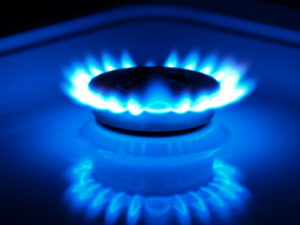 Natural gas surged to the highest level in a month as short-term weather forecasts called for chilly temperatures across most of the densely-populated US areas. Freezing temperatures boost natural gas demand, as Americans crank up the heating.
Natural gas surged to the highest level in a month as short-term weather forecasts called for chilly temperatures across most of the densely-populated US areas. Freezing temperatures boost natural gas demand, as Americans crank up the heating.
On the New York Mercantile Exchange, natural gas for delivery in February soared by 2.38% to trade at $4.537 per million British thermal units by 13:17 GMT. Prices hit a session high at $4.540 per mBtu, also the strongest level since December 24th, while day’s low was touched at $4.434 per mBtu.
Last week, the energy source surged by 5.4%, after losing 5.7% in the previous 5-day period. Prices settled last year 26% higher, the best performance since 2005 and second straight annual advance.
Short-term weather outlook
NatGasWeather.com reported on January 22nd that snowfall continues to wind down along the Northeast coast as the latest Clipper gradually turns toward the sea. A secondary front is already beginning to push in the Northern Plains and by Thursday should have pushed much deeper into the central US compared to the current one, bringing chilly temperatures to the southern Plains and much of northern Texas. According to the website, high natural gas and heating demand can be expected for all but the western US for the week ended January 29th.
During the coming weekend, a much colder Arctic air mass may impact the Northeastern US, with temperatures falling again below zero over the Midwest and New England and single digits and teens for the Mid-Atlantic. Late this weekend and early next week, freezing conditions can be expected along the Gulf Coast and again into Northern Florida, where overnight lows will be into the mid to upper 20s.
Extended forecast
The long-term weather outlook pointed to a period of relatively calm conditions across much of the US. NatGasWeather.com’s forecast for the week ended February 5th called for a big pattern change to take place by February 1st, as a much more active jet stream will attempt to bring Pacific storms to the West coast. The latter will limit the amount of very cold air that is able to push into the central US and will thus ease natural gas demand, by limiting the regions which will experience below-normal temperatures to the Great Lakes, Mid-Atlantic, and Northeast.
By the end of the month, a west to east flow will probably set up across the US, bringing fairly active weather pattern, with numerous winter storms impacting much of the country. On one hand, there will still be areas of moderate to heavy rains and snows, while on the other hand it will be a bit milder for the central and eastern US.
According to AccuWeather.com, temperatures in Indianapolis on January 27th may bottom at 5 degrees Fahrenheit, 15 beneath average, while the low in Detroit may hit 1 degree, below the average of 20 degrees. Temperatures in New York are expected to hit 12 degrees Fahrenheit, 15 below normal.
When cold weather is expected, natural gas surges as increased electricity demand to power air-conditioning calls for more supply of the fuel, which is used for a quarter of U.S. electricity generation. Above-average readings in the winter season have the opposite effect. Consumption usually picks up from November through March. According to the Energy Information Administration, power generation accounts for 32% of U.S. gas demand and 49% of U.S. households use the energy source for heating.
US gas inventories levels
The Energy Information Administration (EIA)reported on Thursday, that US natural gas stockpiles fell by less than expected in the seven days through January 10th, despite the withdrawal being the largest on record. US gas supplies fell by 287 billion cubic feet, trailing analysts’ projections for a decrease of 303 billion cubic feet, but was almost double the five-year average decline of 159 billion cubic feet.
Total gas held in underground storage hubs equaled 2.530 trillion cubic feet as of January 10th, 20.7% below last year’s 3.189 trillion stored. The deficit to the five-year average widened to a record 14.9% from the preceding week’s 10.1%.
Inventories in the East Region fell by 149 bcf to 1.254 trillion and were 18.9% below the five-year average of 1.546 trillion cubic feet. The West Region received a net draw of 31 bcf to 364 bcf, 11.2% below the average. Stockpiles in the Producing Region slid by 107 billion cubic feet and reached 912 bcf, 10.2% beneath the five-year average of 1.016 trillion cubic feet.





